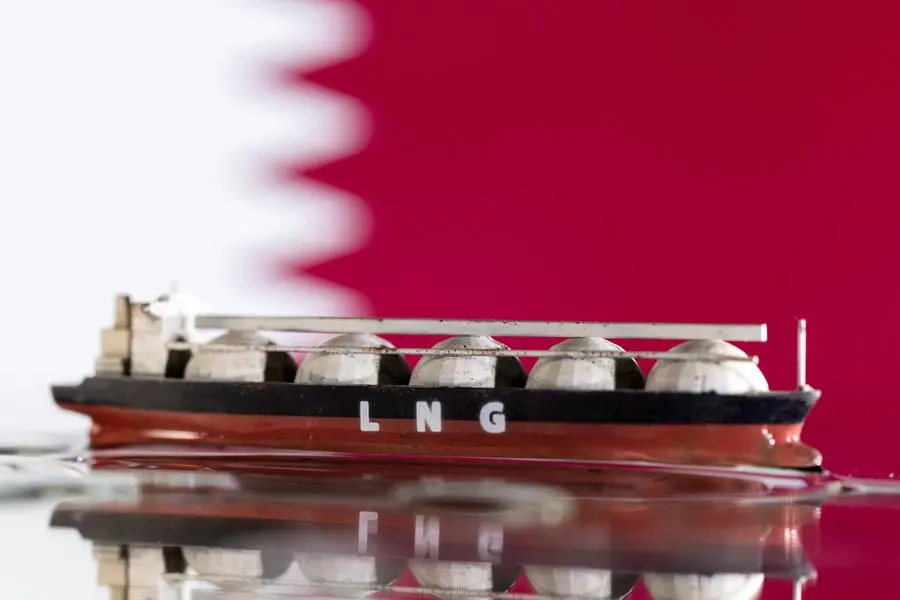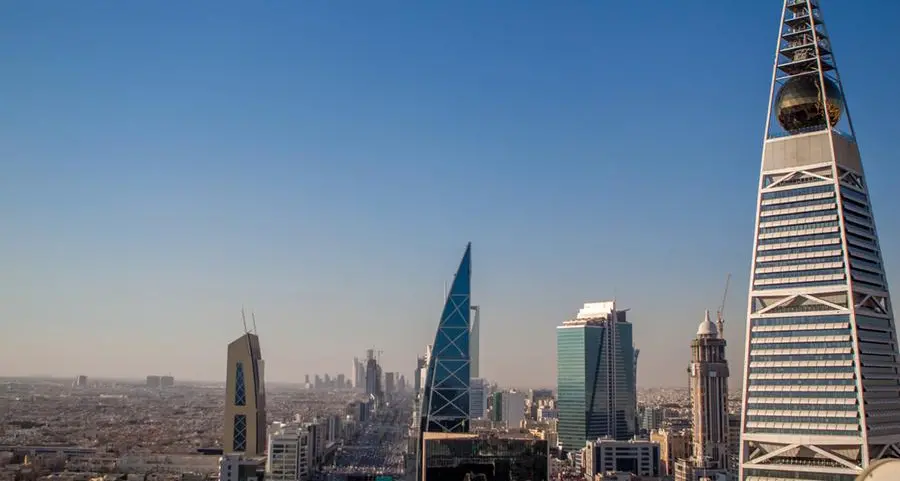PHOTO
Model of LNG tanker is seen in front of Qatar's flag in this illustration taken May 19, 2022. REUTERS/Dado Ruvic/Illustration Image for illustrative purpose.
Qatar was the second top global LNG exporter in June, latest data from the Gas Exporting Countries Forum (GECF) has shown.
Among the GECF member countries, Qatar topped in liquefied natural gas exports last month.
Total global LNG exports reached 32.18mn tonnes during June. The increase in LNG exports from non-GECF countries and a rise in LNG reloads outweighed the lower LNG exports from GECF member countries.
The share of non-GECF countries and LNG reloads in global LNG exports increased from 50% and 0.6%, respectively, from a year earlier to 50.4% and 0.8% in June 2023.
Conversely, GECF's market share in global LNG exports decreased from 49.4% to 48.8%.
During H1, 2023, cumulative global LNG exports reached 205.45mn tonnes, indicating a 4.1% increase (8.06mn tonnes) y-o-y.
Last month, the US, Qatar and Australia were the top LNG exporting countries, GECF noted.
In June, LNG exports from GECF member countries and observers declined by 1% (0.15mn tonnes) y-o-y, reaching a total of 15.69mn tonnes.
The weaker LNG imports were driven by Russia, Egypt, Nigeria, Malaysia, Equatorial Guinea, Norway and the United Arab Emirates.
Conversely, LNG exports increased in Qatar, Angola, Algeria, Mozambique, Trinidad and Tobago and Peru.
During H1, 2023, cumulative LNG exports from GECF member and observer countries increased by 2.2% (2.13mn tonnes) y-o-y, totalling 99.93mn tonnes.
In Russia, higher maintenance activity at the Sakhalin 2 and Yamal LNG facilities led to a reduction in LNG exports, the report said.
Lower feedgas availability in Egypt and Nigeria contributed to the decline in LNG exports in both countries.
In June, Egypt did not export any LNG cargo.
The decline in Malaysia's LNG exports was mainly attributed to weaker exports from the Bintulu LNG facility.
An unplanned outage at the Hammerfest LNG facility caused a drop in LNG exports from Norway.
On the other hand, lower maintenance activity at the Qatargas LNG and Soyo LNG facilities boosted LNG exports from Qatar and Angola.
In Algeria and Trinidad and Tobago, higher feedgas availability supported the increase in LNG exports from both countries.
The continued ramp-up in LNG exports from the Coral South FLNG facility drove Mozambique's LNG exports higher.
In June, global LNG imports expanded sharply by 6.8% (2.09mn tonnes) y-o-y to reach 32.85mn tonnes.
This growth was primarily driven by a strong rebound in Asia Pacific's LNG imports, with higher imports in Europe and Latin America and the Caribbean (LAC) also having some contribution. Conversely, the Middle East and North Africa (Mena) region experienced a decline in LNG imports.
During the first half (H1) of 2023, cumulative global LNG imports grew by 4% (7.95mn tonnes) y-o-y to 206.62mn tonnes.
The bulk of the increase in global LNG imports during H1 2023 came from Europe, followed by Asia Pacific, LAC and North America. This offset the lower LNG imports in the Mena region, GECF noted.
© Gulf Times Newspaper 2022 Provided by SyndiGate Media Inc. (Syndigate.info).Among the GECF member countries, Qatar topped in liquefied natural gas exports last month.
Total global LNG exports reached 32.18mn tonnes during June. The increase in LNG exports from non-GECF countries and a rise in LNG reloads outweighed the lower LNG exports from GECF member countries.
The share of non-GECF countries and LNG reloads in global LNG exports increased from 50% and 0.6%, respectively, from a year earlier to 50.4% and 0.8% in June 2023.
Conversely, GECF's market share in global LNG exports decreased from 49.4% to 48.8%.
During H1, 2023, cumulative global LNG exports reached 205.45mn tonnes, indicating a 4.1% increase (8.06mn tonnes) y-o-y.
Last month, the US, Qatar and Australia were the top LNG exporting countries, GECF noted.
In June, LNG exports from GECF member countries and observers declined by 1% (0.15mn tonnes) y-o-y, reaching a total of 15.69mn tonnes.
The weaker LNG imports were driven by Russia, Egypt, Nigeria, Malaysia, Equatorial Guinea, Norway and the United Arab Emirates.
Conversely, LNG exports increased in Qatar, Angola, Algeria, Mozambique, Trinidad and Tobago and Peru.
During H1, 2023, cumulative LNG exports from GECF member and observer countries increased by 2.2% (2.13mn tonnes) y-o-y, totalling 99.93mn tonnes.
In Russia, higher maintenance activity at the Sakhalin 2 and Yamal LNG facilities led to a reduction in LNG exports, the report said.
Lower feedgas availability in Egypt and Nigeria contributed to the decline in LNG exports in both countries.
In June, Egypt did not export any LNG cargo.
The decline in Malaysia's LNG exports was mainly attributed to weaker exports from the Bintulu LNG facility.
An unplanned outage at the Hammerfest LNG facility caused a drop in LNG exports from Norway.
On the other hand, lower maintenance activity at the Qatargas LNG and Soyo LNG facilities boosted LNG exports from Qatar and Angola.
In Algeria and Trinidad and Tobago, higher feedgas availability supported the increase in LNG exports from both countries.
The continued ramp-up in LNG exports from the Coral South FLNG facility drove Mozambique's LNG exports higher.
In June, global LNG imports expanded sharply by 6.8% (2.09mn tonnes) y-o-y to reach 32.85mn tonnes.
This growth was primarily driven by a strong rebound in Asia Pacific's LNG imports, with higher imports in Europe and Latin America and the Caribbean (LAC) also having some contribution. Conversely, the Middle East and North Africa (Mena) region experienced a decline in LNG imports.
During the first half (H1) of 2023, cumulative global LNG imports grew by 4% (7.95mn tonnes) y-o-y to 206.62mn tonnes.
The bulk of the increase in global LNG imports during H1 2023 came from Europe, followed by Asia Pacific, LAC and North America. This offset the lower LNG imports in the Mena region, GECF noted.





















